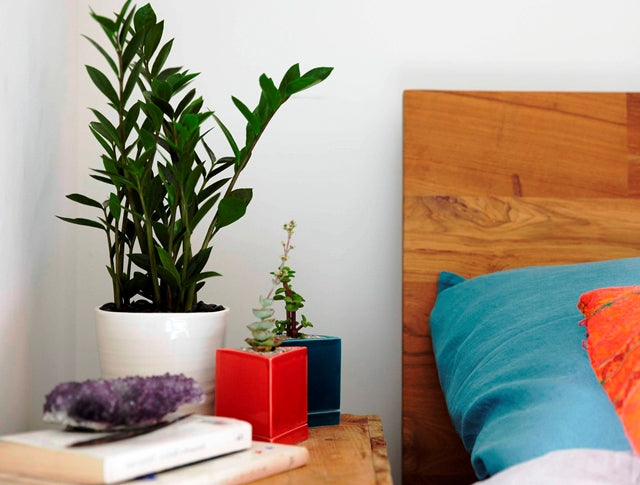by Ken Lain, the mountain gardener
Best Little Space Museum in the Southwest
This week’s article begins with a non-horticultural bit of information that I’m excited to share. Lisa and I have found a fantastic little museum in Alamogordo, NM. It’s representative of the era that spawned interest in Star Trek, Battlestar Galactica, and sustained appetites for the Sci-Fi genre on TV and movie screens. Our son, James, is an Army Physician’s Assistant at Fort Bliss, so with James and our three grandchildren, we happily make the hour’s drive from El Paso to the Alamogordo Space Museum.

Reminiscent of museums from 1980, it may be a bit dated, but it is much more intimate and fun than other more sophisticated, state-of-the-art, air and space museums, especially if you are visiting it with children under the age of 13. This is a highly informative and interactive place, and the kids, of all ages, love it.
We can play with modules that allow us to feel how different rockets felt; we have landed, or sometimes crashed, the space shuttles, all while dressed in “cool” astronaut suits. The proof of our good time at the museum is in this non-gardening-related photo!
Museum of Space History, Hwy 2001, Alamogordo, NM 88311-5430
Most Indestructible Houseplant
Lisa and I are very busy business owners that, because of our passion for travel and love of our out-of-state grandchildren, we often seem to spend more time absent from rather than in our home. As plant lovers, this creates challenges for keeping our leafy loved ones thriving while we are away. Those of you who love houseplants plus cruise ship travel and/or long road trips are familiar with these issues.

Landscape plants are easy to care for with computer-aided irrigation, but indoor plants are a different matter. Having really tough indoor plants that thrive on abuse and neglect is our secret, and we have a favorite: the ZZ plant.
ZZ Plant is short for ‘Zamioculcas zamiifolia’, also referred to as the Zanzibar Gem. It really deserves its reputation as an indestructible houseplant. It’s the main reason so many commercial settings, offices, and malls use this green beauty as a foundation for indoor décor. It is undemanding and survives the neglect that quickly would kill a lesser plant.
Conditions and Considerations for ZZ Plants
ZZ’s may be tough, but they definitely have their preferences. Here’s what to expect from them and how to ensure that they thrive:
Size: You can expect a small plant to reach a height of 2-3′, but only with years of maturity. This is a slow grower, so a small tabletop size stays that way for years. If large floor plants are needed, it pays to buy a big size rather than waiting for a small plant to s-l-o-w-l-y grow to its full stature.
Light: Semi-shade to bright light is best for a ZZ, but not exposure to direct sun in a south-facing window.
Water: These super hardy houseplants store water in their thick tuberous rhizomes, their thick, fleshy stems, and their waxy leaves. You mustn’t water this plant too frequently. We water our larger plants every 2-3 weeks but during winter we’ve not watered them for up to a month. They are ideal animate additions to that infrequently occupied guest room.
Temperature: Thrive anywhere in your home except at a drafty front door, or right beside the fireplace. Ideal temperature needs range from 55 to 80 F.
Soil: They prefer a well-drained potting mix. When plants need repotting in 3-4 years, use Watters Potting Soil , an excellent planting medium, and transplant only to the next largest-sized pot.
Fertilizer: In Spring and Summer, feed a ZZ once a month with Watters Flower Power. Fall through Winter feed monthly with Root & Grow for optimal health. This applies to all plants grown indoors, but especially for a robust, infrequently watered ZZ Plant.
Pruning: The main reasons for pruning are for propagation or to prune off the occasional lower yellow leaf or awkwardly arching stem.
Propagation: Spring and Summer are the seasons for propagation, whether from a division or by rooting a stem in water. To start a new plant, use pieces of the root that include at least two leaves. Plant directly into Watters Potting Soil and keep moist and warm until new shoots begin to emerge. Until the first shoots appear, add Root & Grow to your water at 3 tablespoons per gallon; this ensures fast root development. Although new plants are slow to grow, your new plant will reward your patience with vibrant new growth.
ZZs are highly dependable, attractive, and tolerant plants. The vast majority of mistakes with ZZ plants are caused by either dark living spaces or too much water. They dislike waterlogged soil because it causes their leaves to turn yellow, brown, and die. Older plants can often be rejuvenated; I’ve even had one that looked dead come back to vibrant life!
Our ZZ plants almost always get the comment, “what is that plant?”. A question often heard when the glossy new green leaves erupt with growth in Spring.
Here is a Pinterest Board of our favorite Indestructible Houseplants that you’ll find here at Watters.
Until next week, I’ll be helping local gardeners pick perfect indestructible plants here at Watters Garden Center.
Ken Lain can be found throughout the week at Watters Garden Center, 1815 W. Iron Springs Rd in Prescott, or contacted through her web site at WattersGardenCenter.com or FB.com/WattersGardenCenter .
Ken can be found throughout the week at Watters Garden Center, 1815 W. Iron Springs Rd in Prescott, or contacted through his web site at WattersGardenCenter.com or FB.com/WattersGardenCenter .



Is the ZZ plant safe around pets? I know some houseplants can be toxic to cats.
No this is not safe, any and all parts are toxic to animals